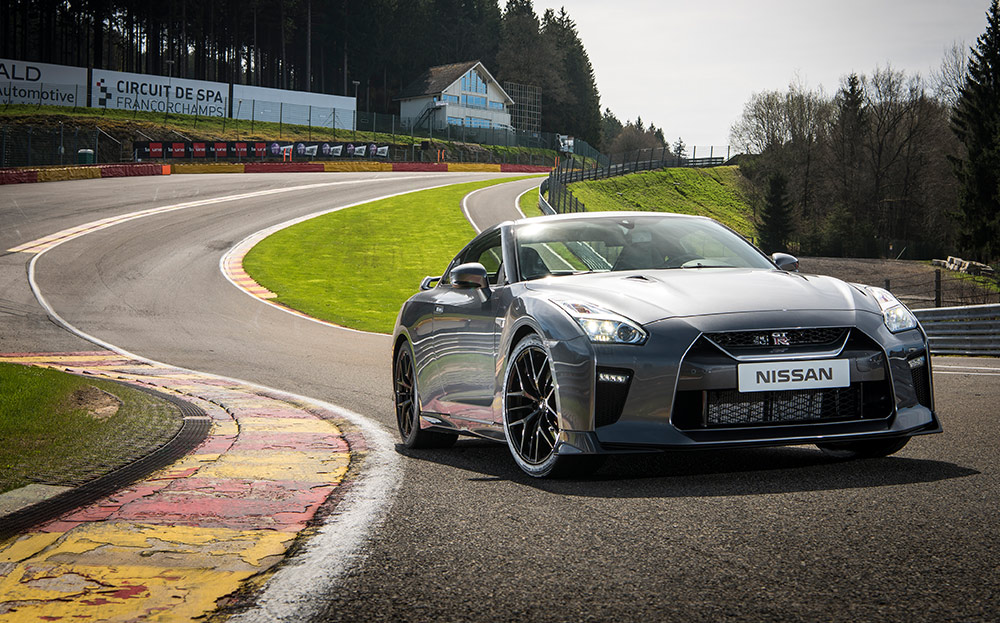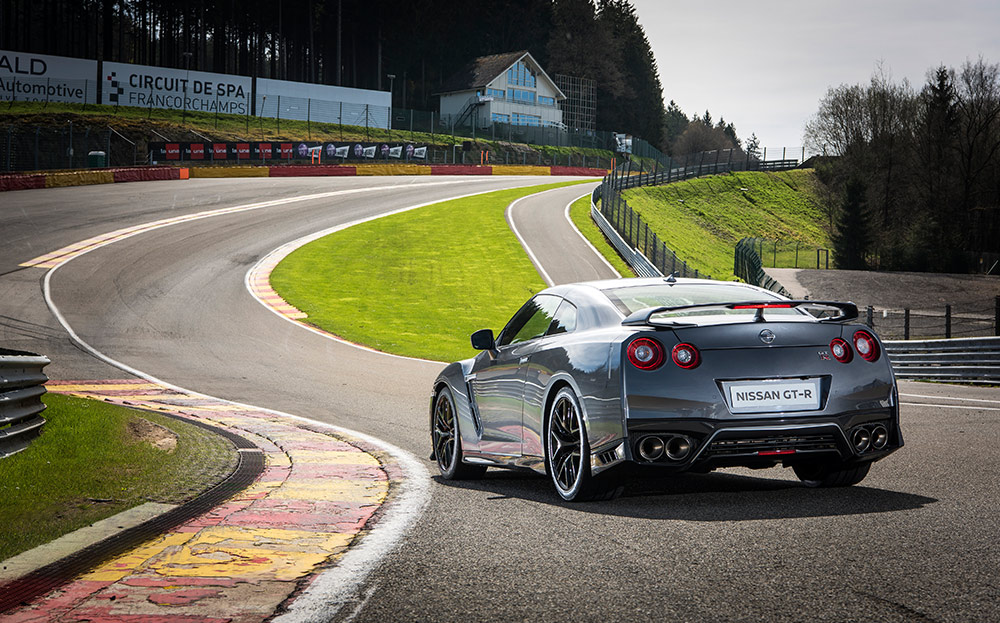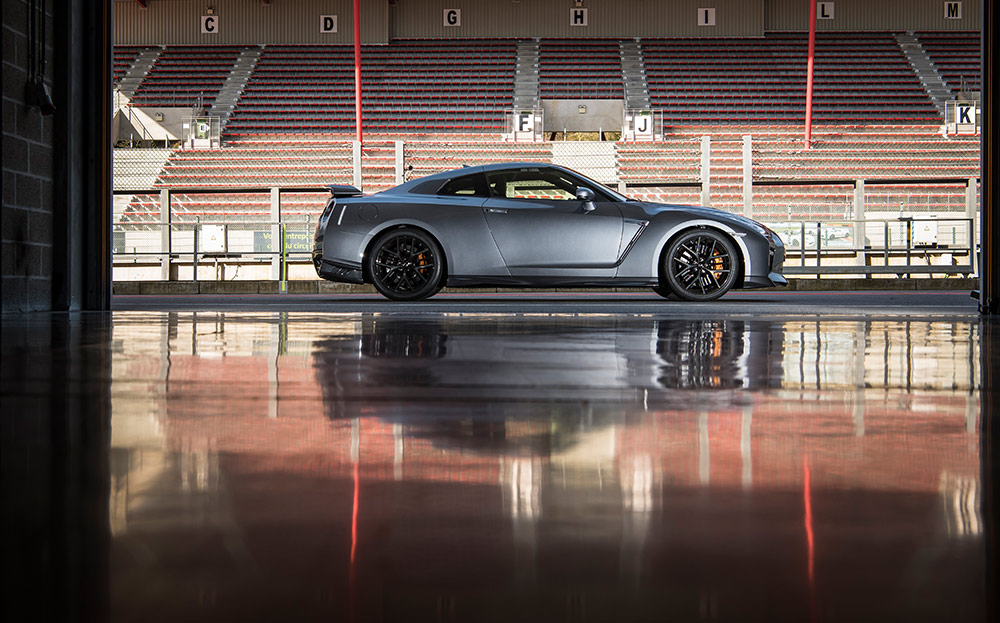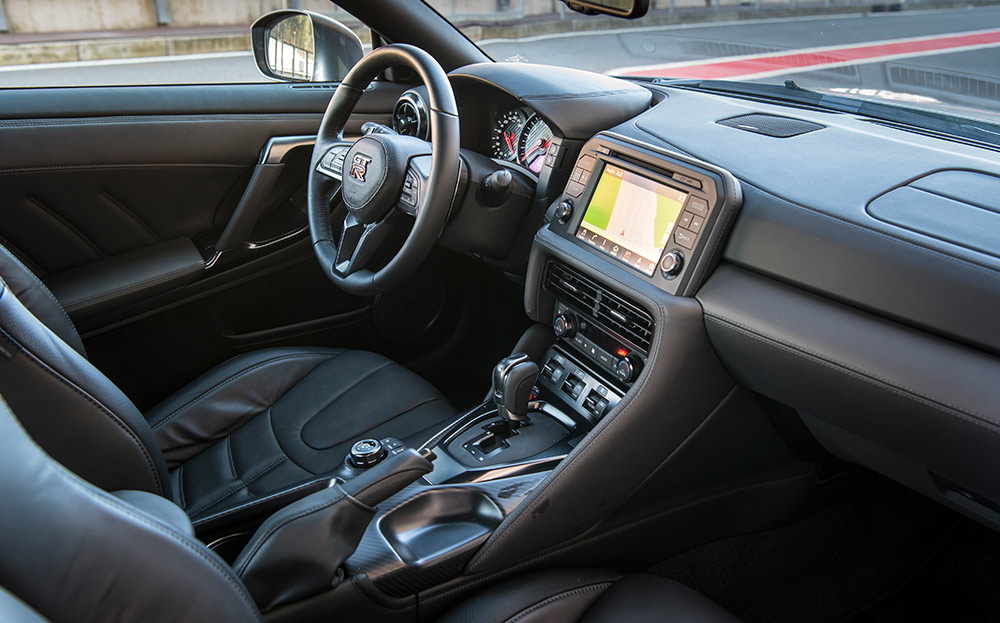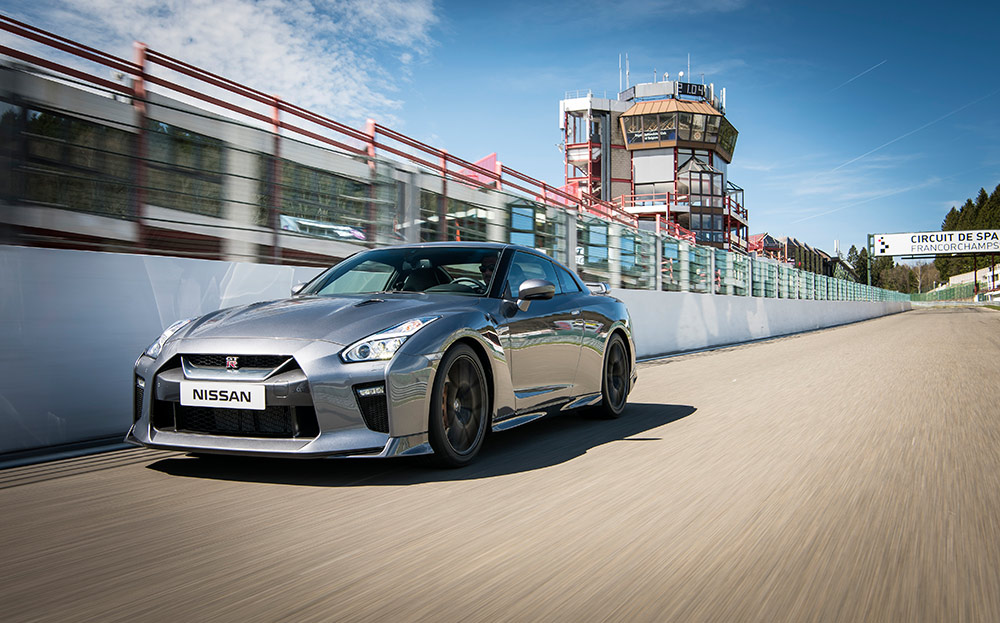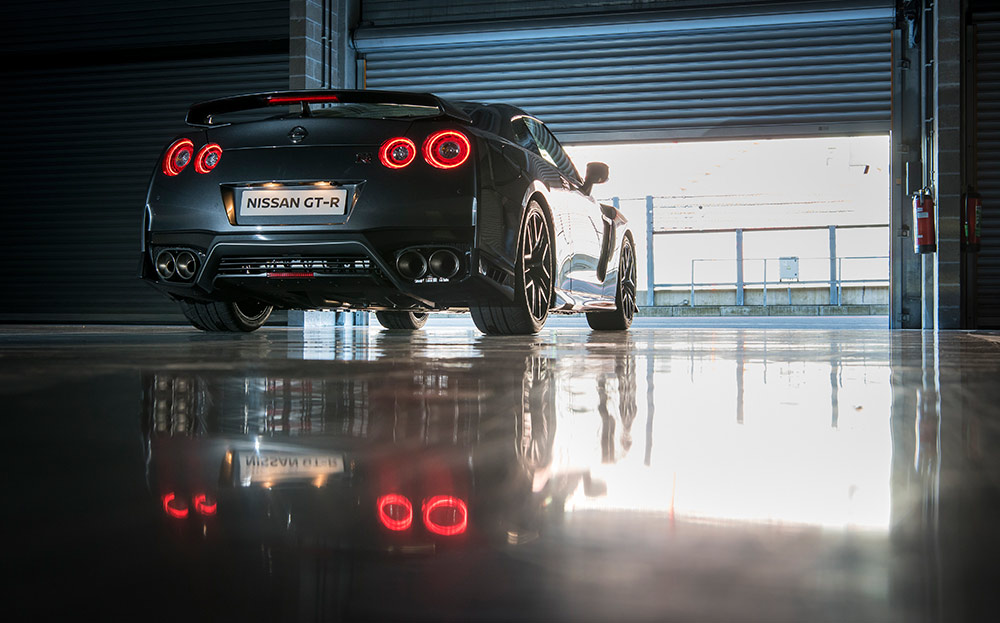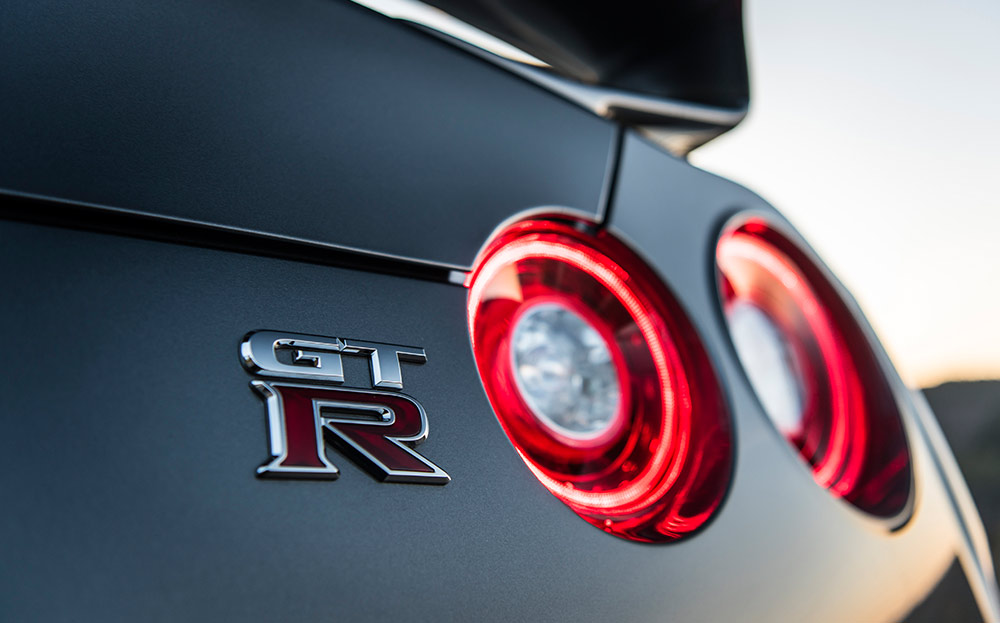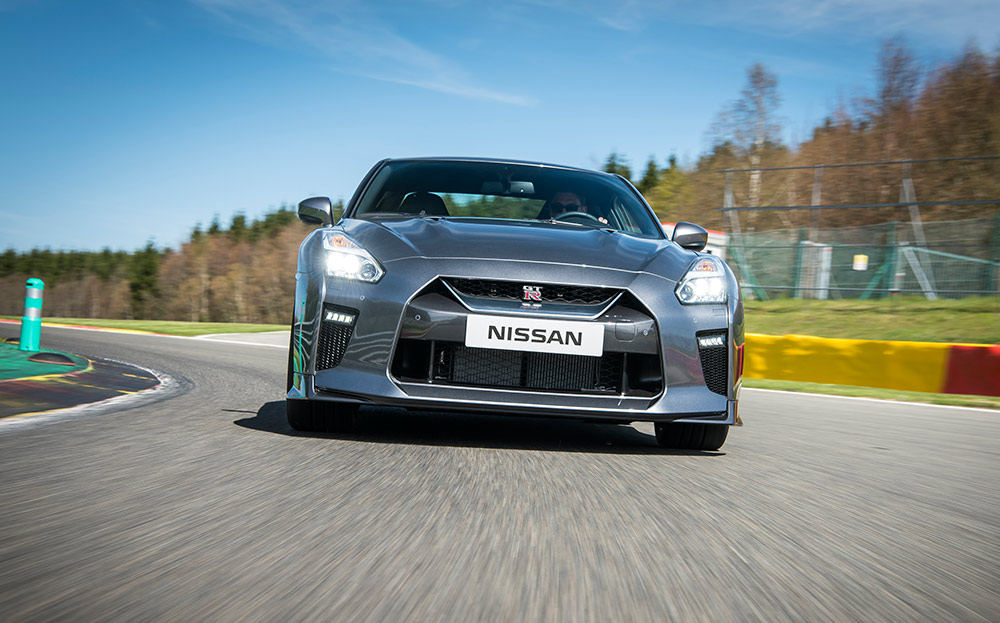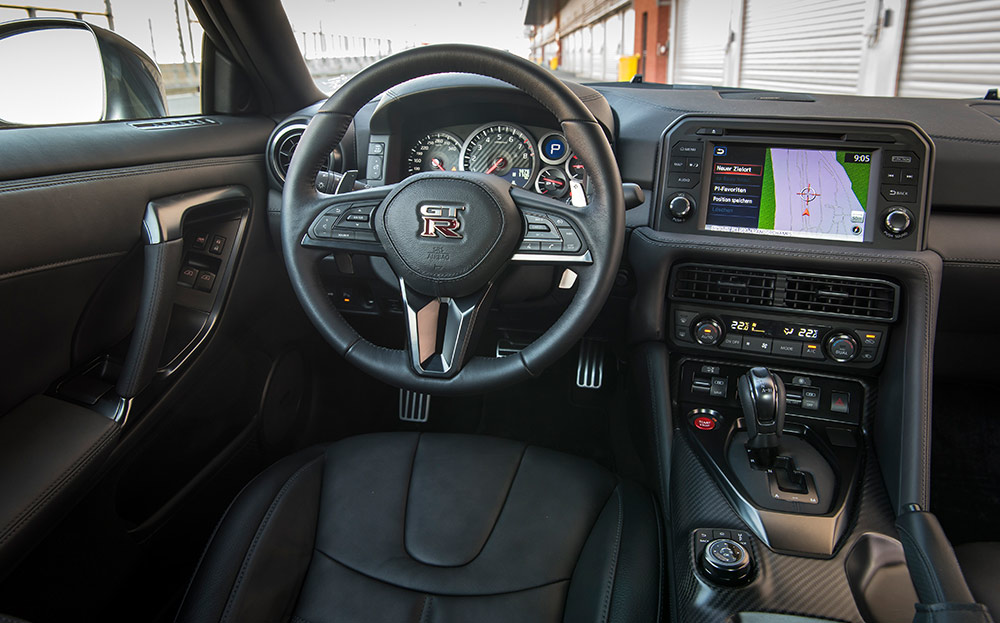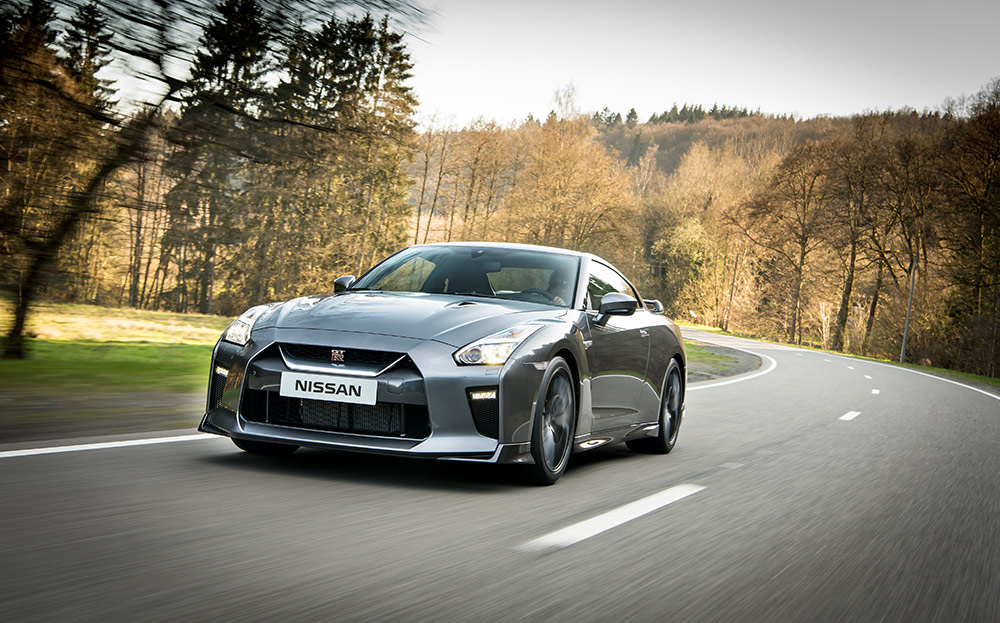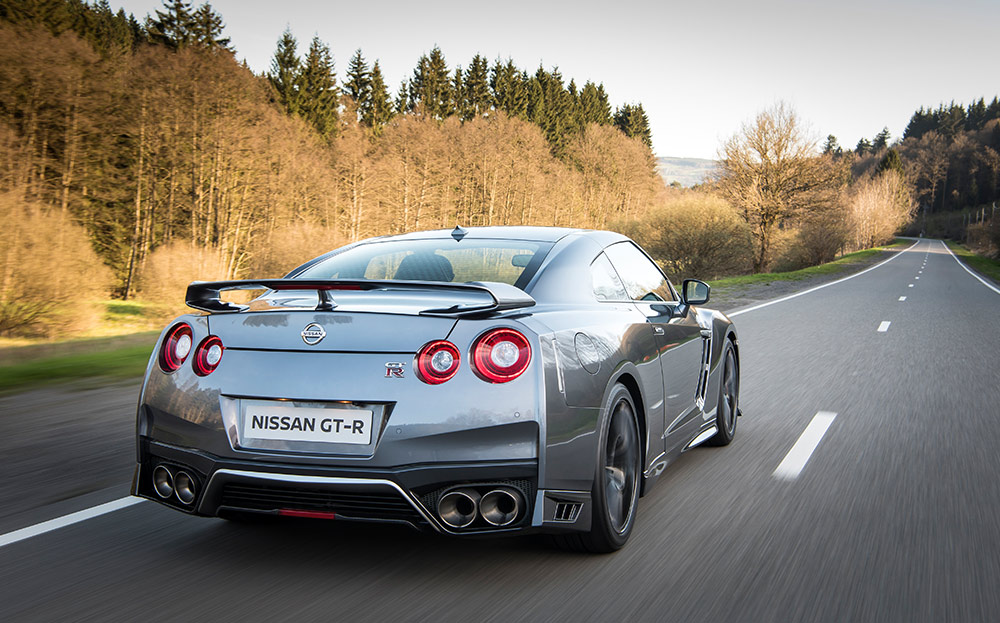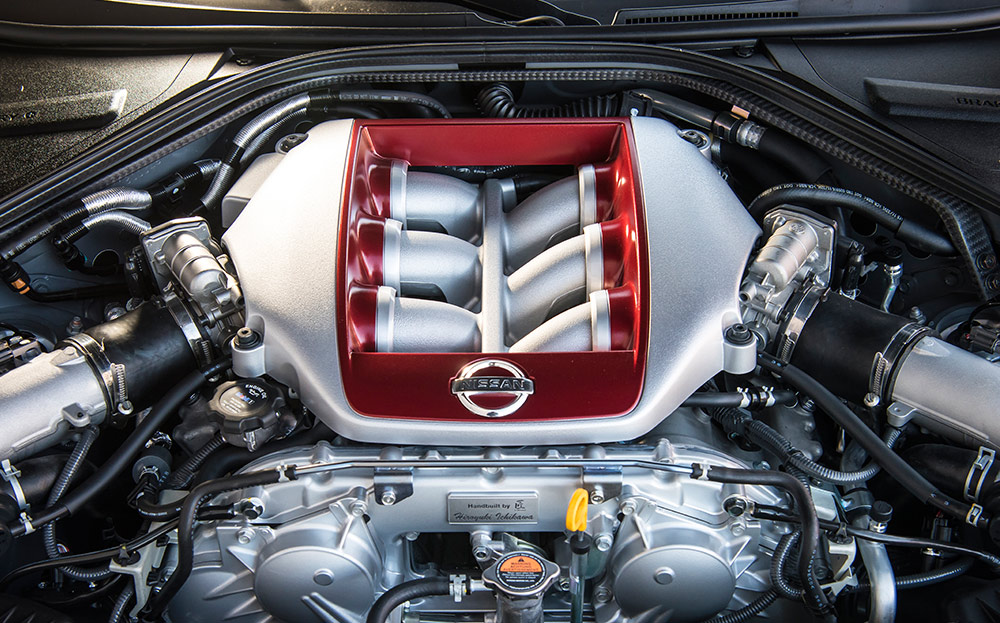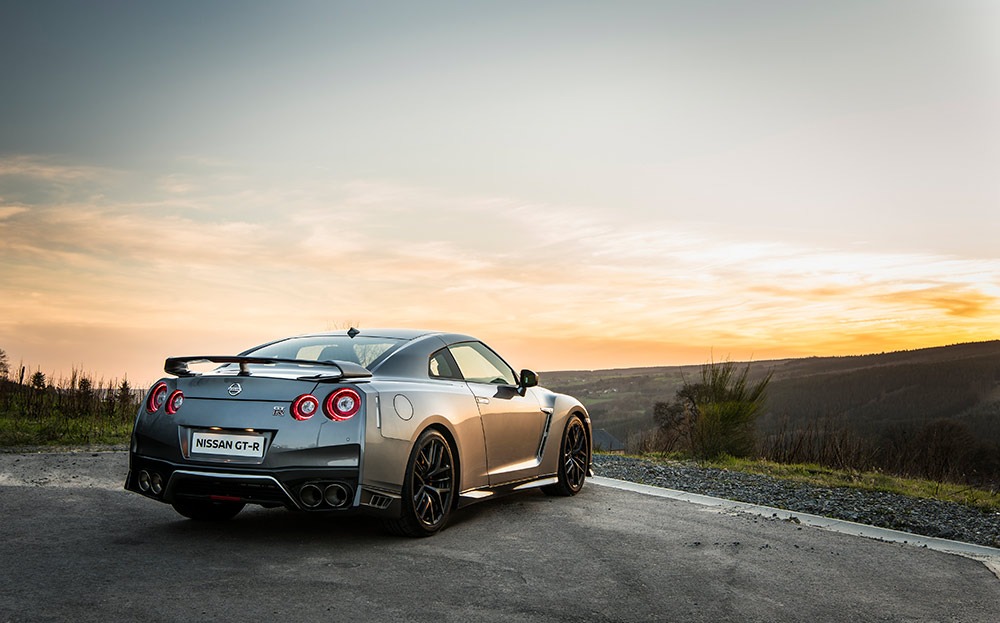First Drive review: 2016 Nissan GT-R
The juvenile delinquent has grown up but packs more punch than ever
HOW HARD would it be to mess up the Nissan GT-R? In most experts’ books, it’s been pretty much the ultimate four-seat supercar money can buy since the R32 version was launched in 1989.
And it’s not much money at that: you can pick up a new GT-R for a fraction price of the world’s most exotic supercars (the GT-R currently starts at a whisker under £80,000) and the same afternoon make their owners look ridiculous at the race track. How? By fusing saloon/coupé practicality and looks with racing car underpinnings and, at its heart, a stonking, almighty, powerhouse engine.
So it was with no small expectation that we arrived at the Spa-Francorchamps racing circuit in Belgium to try out the latest incarnation of the current R35 GT-R. It’s a model that was introduced in 2007 to unfettered praise — Clarkson said the R35 was “not a five-star car… It’s the five-star car” — but it turns out Nissan hasn’t just facelifted the GT-R that he drove; they’ve made quite a few substantial tweaks all round. This may not be an all-new car but it is a substantial update.
View the used Nissan GT-Rs for sale on driving.co.uk
For example, because a few racing drivers told Nissan that they loved the GT-R but thought the front end was, maybe, if they were being super critical, just a fraction loose, the company has added a new, more rigid frame around the windscreen. While they were at it, Nissan’s engineers added reinforcements around the boot, too. The result is a tauter chassis.
They then turned their attention to the engine. The same 3.8-litre twin-turbo V6 engine (still handbuilt over 9.3 man-hours by one of only five “Takuki master engineers”) is used but turbo boost pressure has been increased and the ignition timing has been altered, resulting in a 20hp increase in power. Torque is only marginally increased (by just 4 lb ft) but it’s spread over a wider rev range, meaning more poke in the mid-revs with its peak coming between 3,300rpm and 5,800rpm, changing the character fundamentally.
Having done this, they found that the engine needed extra cooling, so the grille was increased in size and fancy aero changes feed more air into the engine bay. But sending airflow into the car instead of around it means more drag, so other design changes were made to compensate. A new front splitter, side skirts, C-pillar and rear haunches mean, according to Hiroshi Tamura, Nissan’s hyper-enthusiastic chief product specialist, zero increase in drag.
What’s more, a reworked bonnet means increased downforce at high speeds.
According to Tamura, increasing performance is only half the story. The Nissan GT-R may be one of the most highly regarded of performance cars but, like a puppy with boundless energy, it’s a touch juvenile in comparison to the likes of the Porsche 911 or offerings from Mercedes-AMG.
With that in mind, Nissan has tried to take the GT-R out of short trousers. A much improved interior greets you as you open the door, with a Nappa leather dashboard, smart leather sports seats, a larger touchscreen with less pointed, more rounded corners, and, mercifully, far fewer buttons and switches. It’s a cleaner, more grown-up cabin without doubt, although the use of hard black plastic buttons on the centre console and the feel of some of the switches still lacks the je ne sais quois of cars at the premium end.
You still get the Playstation-generation digital dials in the infotainment screen, though, showing boost pressure, brake pressure, acceleration and, most significantly, G-force. It’s fun but mostly only useful for bragging rights, and a software update could improve the overall look of the system.
The important switches remain below the screen, though — three toggles allow you to alter the traction control, damping (and opens the exhaust valve at all engine speeds, in case you want to wake up the neighbours when you set off for work), and drivetrain management, which allows you to specific race mode or, in “Save”, engage permanent four-wheel drive for low grip situations (normally, the GT-R has a 100% rear-wheel bias, but will shift torque to the front wheels to help you get round corners).
“It’s almost impossible to crash a GT-R — there’s grip everywhere. Yet it’s so savagely quick that it’s never dull”
The GT-R’s power is matched by its electronic brain, and even with everything switched to “R” mode, it proved hard to put a foot wrong around Spa. Acceleration is brutal, of course, and it’s more than possible to achieve oversteer, especially mashing the throttle around low speed corners, but in the blink of an eye the GT-R will find a balance and keep you firing where you point it at an impossible pace.
And it will follow your steering inputs to the letter — want to follow the racing line? “Easy,” says the GT-R. Fancy going off line? “OK, you know best,” it replies. “Don’t worry, I’ve got your back.” The GT-R works with you, not for you. And it knows it can always go faster than you can, begging you to finds its limits. It’s almost impossible to crash a GT-R — there’s grip everywhere. Yet it’s so savagely quick that it’s never dull. It’s hard to imagine a more perfect blend of confidence-inspiring grip and outright mad fun.
And the extraordinary thing is that, whether flying through Eau Rouge at somewhere over 100mph, hitting 170mph on derestricted German autobahns or doing 20mph through potholed Belgian villages, the GT-R seems… comfortable.
It’s perhaps the latter situation that is most impressive with the new car, given that we already knew the previous GT-R was blindingly capable at high speeds. At low speed, through urban environments the suspension, with the dampers in Comfort mode, seems to be much more compliant than before — a match for any family car.
Similarly, on long journeys, driving the new GT-R is a lot less stressful. You had a sense, in the old car, that you were essentially driving a highly sophisticated tractor, with giant, solid chunks of metal clunking together underneath you. It was industrial. Hard core.
But the new car’s edges have been softened for everyday use. Changing down from third to second approaching junctions has been noticeably smoothed out, the transmission still impressing on you that it’s a lot tougher than that which you’d find in the the Nissan Note, but hardly any less silken.
Tamora-san worked on the GT-R concept that was unveiled in 2001 (and evolved into the R35). He gave that car automatic transmission (he describes it as “robotised, with paddle shifts, rather than automatic”), which confounded many critics at the time— no true driver’s car has an auto ‘box, they said. But time has proved him right and you now struggle to find a high performance vehicle that trusts the driver with a stick shift. Electronic brains and dual-clutches can do the work in a fraction of the time of us dumb humans at the controls.
With it now more refined than ever, and with the more supple suspension at low speeds, the plusher interior and work to reduce noise inside the cabin, the GT-R proves it’s as capable as a daily driver as it is at the track. Somehow Nissan has kept the GT-R’s stunning track abilities — improved them, even — but made it nowhere near as tiring to live with and use on the road.
Browse NEW or USED cars for sale on driving.co.uk
Which is why Track and Nismo versions of the car will follow the standard car, offering a bias towards its Mr Hyde side. It’s true that the suspension could be slightly stiffer for ultimate lap times but it’s hard to imagine a more capable all-rounder than the standard car, nor one that you’d rather use anywhere other than the race track.
It all begs the question, what on earth will the R36 be like? Tamora is giving nothing away about when that car will be introduced — he’s focussed only on the new R35, he says. As reported a couple of years ago, the next car is likely to feature a hybrid drivetrain and, with electric power, could beat the Porsche 918 Spyder hypercar’s Nurburgring lap time. So it may be that Nissan has wrung just about every last drop out of the current GT-R but if this is the last incarnation of the R35, it’s a fitting swansong.
Like the Porsche 911 before it, the GT-R has matured. And it just gets better with age.


